Author: Christine Skirbunt
Before the Kit Home Era, it was a different America. Kit Homes preceded the housing developments and modern suburbs that came into fashion after WWII by decades, yet it was the Sears Kit Home that gave Americans their first glimpse at 20th century single-family domestic life when most families were still living in multi-generational housing.
Primarily found on the east coast and in the mid-west, Sears Homes have also been found as far south as Florida, as far west as California, and as far north as Alaska. There have even been some discovered in Canada! These homes were built by the homeowner, relatives, friends and neighbors. It could become a community affair very much like a barn-raising. (Sears Modern Homes)
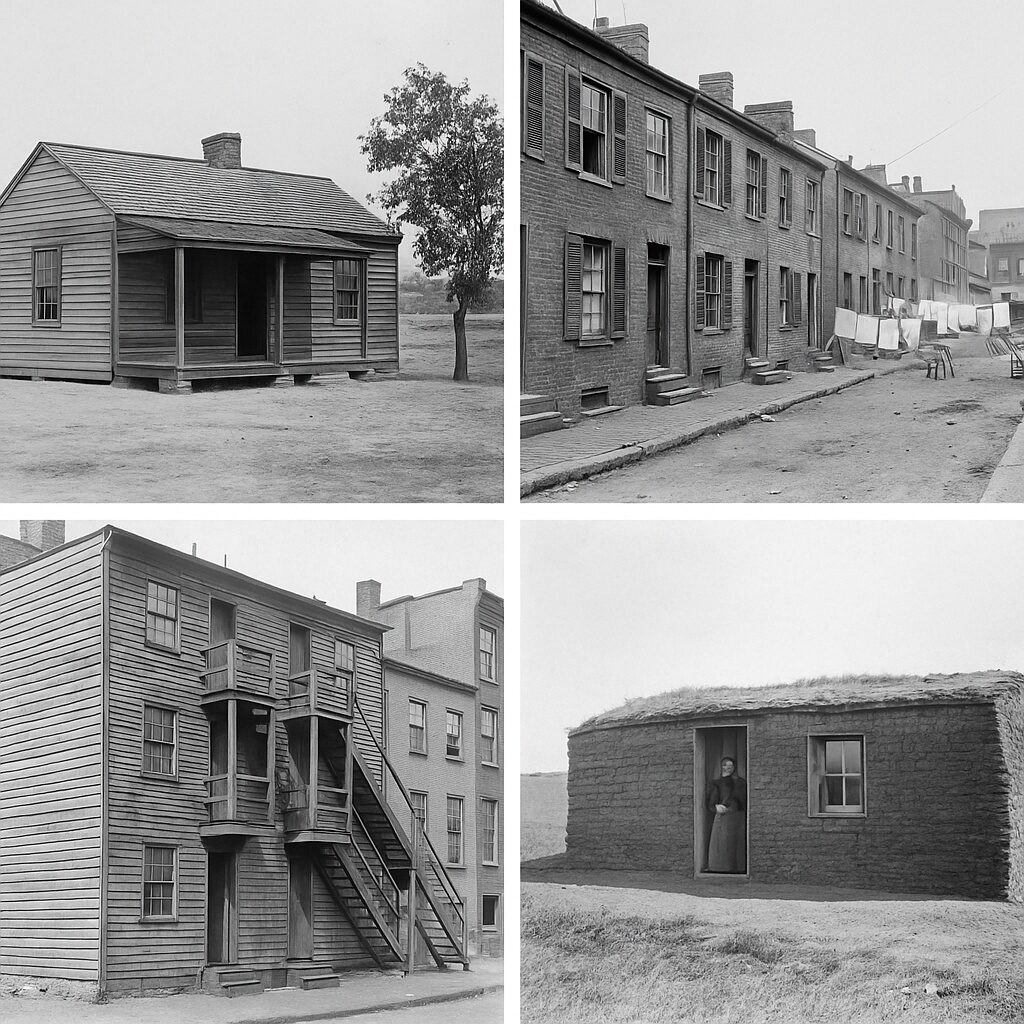
Before the 20th century, most Americans lived in homes either built by untrained hands or constructed by local carpenters. In small towns, modest homes dotted the landscape, frequently constructed without formal blueprints. In these areas, families often erected small cabins or cottages using timber or sod, relying on local materials and generational knowledge. Designs were simple and practical, typically consisting of one or two rooms with a fireplace at the center for heat and cooking. Expansion, when possible, was gradual, with new rooms added as families grew or funds allowed.
Cities, however, presented a different reality: rapid urbanization forced working-class families into crowded tenements, often dark, poorly ventilated, and unsanitary. Rowhouses lined many urban streets and offered narrow but more private living quarters for those lucky enough to afford them.
But for most Americans at the start of the 20th century, the “American Dream” of owning a home was not even a dream. The idea of homeownership was, at best, a distant fantasy – financially out of reach without significant savings, a large inheritance, or assistance from a wealthy employer.
The Birth of the Sears Kit Home
The first Sears, Roebuck and Co. mail-order catalog was issued in 1888 and featured mainly jewelry and watches. At its peak, Sears offered over 100,000 items for sale within its pages and weighed four pounds! But the company seemed a long way from ever offering homes. Yet, within a mere twenty years’ time, they changed homeownership forever.
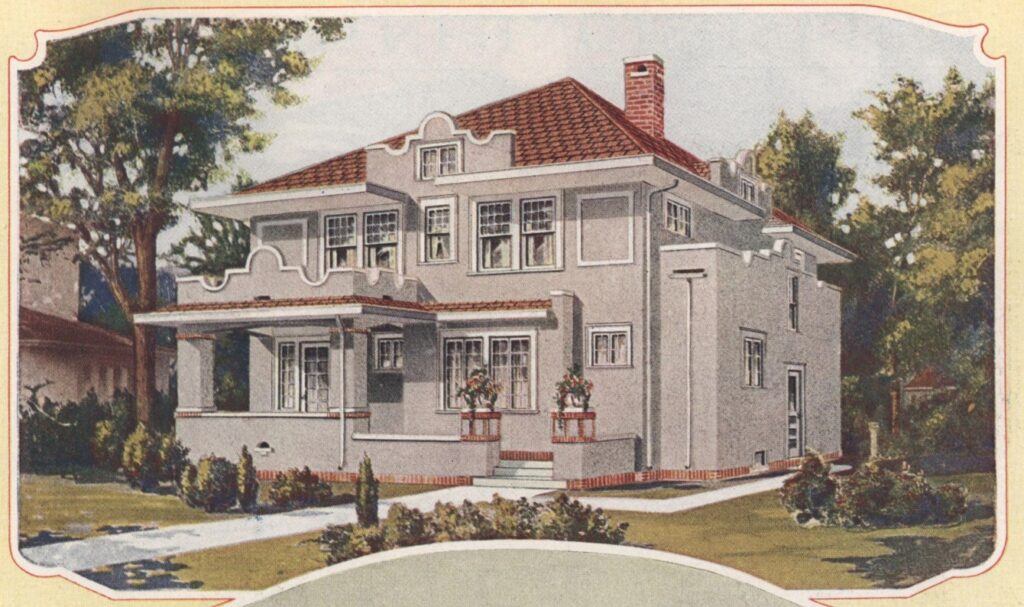
In 1906, The Aladdin Company offered the first “Kit Homes” via mail order. This was a revolutionary concept that Aladdin does not get much credit for today. This is mainly because, two years later in 1908, Sears, Roebuck and Co. issued its first catalog for their own line of homes, The Book of Modern Homes and Building Plans. It featured 44 home styles that ranged in price from $360 to $2,890. What set Sears apart from Aladdin and the other kit home companies was simple: reach. Since 1888, Sears had been delivering millions of catalogs to households across America. Now, tucked among the pages, those same customers found something extraordinary – a chance to own a home, offered at a price and convenience many could reach. (The House That Came in the Mail)
Sears revolutionized American housing with the launch of their Modern Homes catalog. With one-fifth of Americans already subscribed, the masses would soon be able to order everything they needed to build a home. Customers selected from the “Kit Homes” the one they wanted, simply mailed in a check and, shortly thereafter, everything they needed to build a home was shipped via railroad boxcar and then trucked to the homesite. The boxcar door was secured with a prestigious red wax seal to be broken only by the new homeowner.
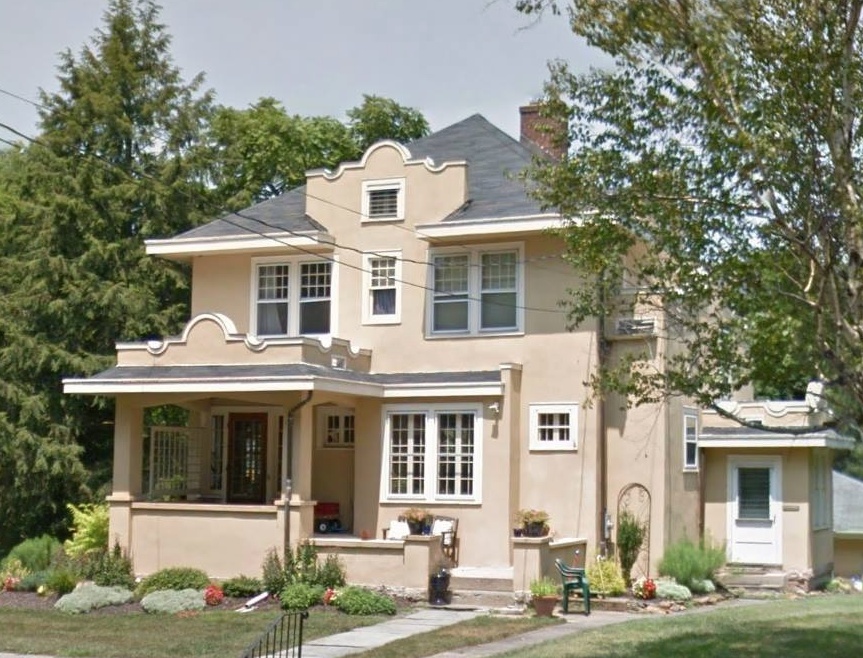
The average Sears Home Kit had about 25 tons of materials for the homeowner to sort through. This included electrical wiring, heating systems, everything right down to the nails, doors, windows, roofing, flooring, and paint. The new homeowner had very little they needed to purchase outside of the kit to complete the homes themselves.
For many, these houses were the first homes they lived in with luxuries like good insulation and plumbing. Sears also offered plasterboard similar to modern drywall known as Goodwall. It was an easy alternative to the plaster and lath walls that had laboriously been built for generations prior. (Sears Modern Homes)
Each kit included a very thick, detailed, but easy-to-follow instruction manual. Every piece of wood was precut and numbered, corresponding to the provided blueprints. This approach significantly reduced waste and simplified construction. With basic carpentry skills and the help of family, friends, or local workers, families could build their own homes efficiently and affordably.
The Sears Modern Home program soared in popularity after World War I, as returning veterans sought to build new lives and embrace more independent living, moving away from the tradition of multi-generational households.
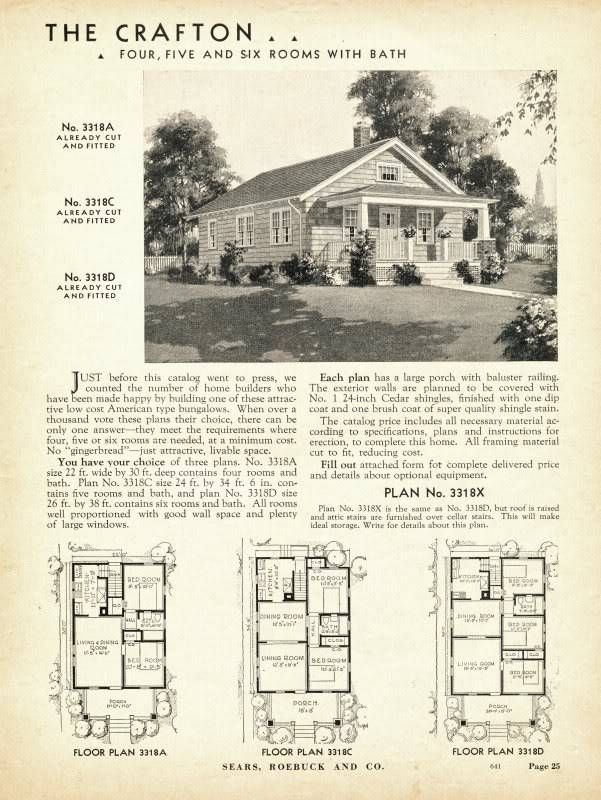
Popular and Unpopular Sears Homes
Sears eventually offered more than 400 designs over the years, ranging from modest cottages to elaborate three-story mansions. Some homes remained in the catalog for years due to their popularity while others only earned a spot for a few catalogs. Each Sears Modern Homes catalog featured anywhere from 80 to 100 different models, each with a name reflecting its architectural aspirations.
Among the hundreds of designs Sears offered, some models became iconic. The Crafton, a simple Colonial-style home, captured the essence of traditional American aesthetics, appealing to families who valued practicality and understated charm. The Alhambra, with its Mediterranean-inspired design featuring stucco exteriors and arched doorways, became wildly popular during the 1920s and cropped up in the most unlikely of locales.
The Magnolia, Sears’ largest and most expensive model, embodied grand Southern-style architecture, complete with massive columns and sprawling porches. However, it fell flat and only a handful were ever built, making the few surviving examples around today incredibly rare and valuable.
In their first Modern Homes Catalog, Sears even offered a schoolhouse kit! The 1908 school was two-stories, had six large classrooms, a library, an auditorium, and a superintendent’s office. All of this was available for $11,500, but it is unknown if any communities took Sears up on this offer.
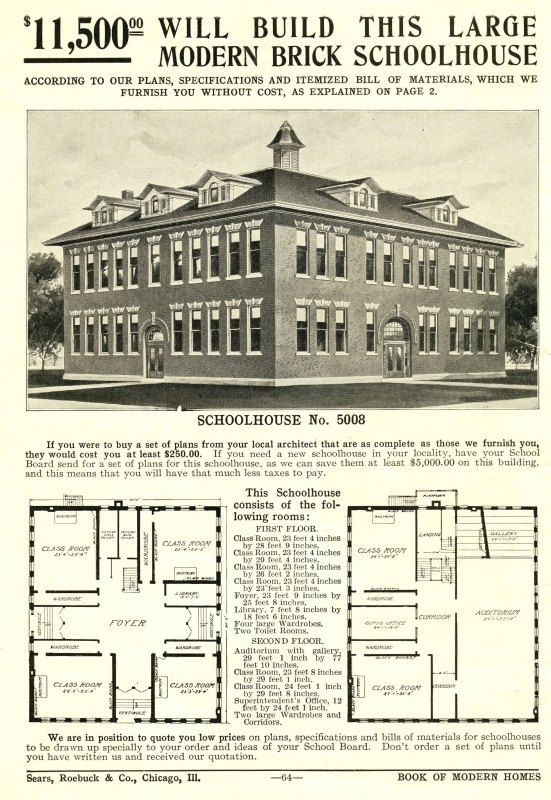
Empowering Regular Americans
Sears designed its homes for the average man to build and they became so popular that their largest mill for creating the materials for these homes was in Cairo, Illinois and covered nearly 40 acres. (The House That Came in the Mail)
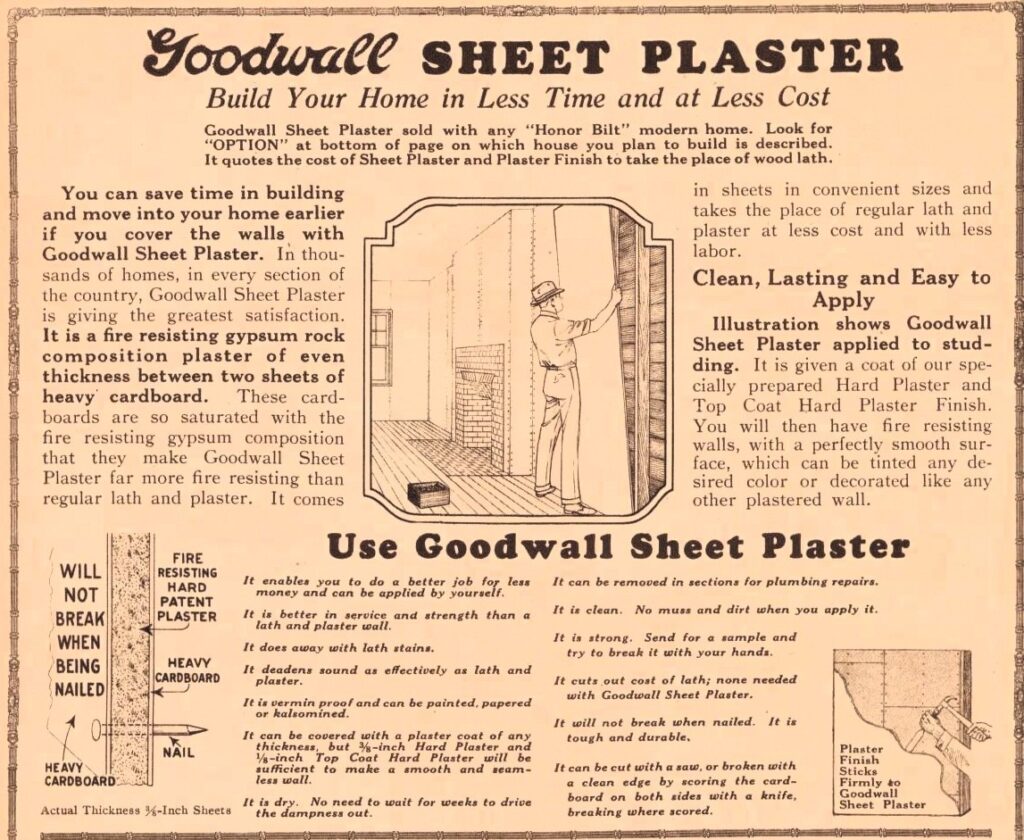
Manuals were extremely detailed, offering instructions on everything from laying a foundation to framing walls and installing roofing. Roof trusses, walls, and floors were constructed systematically, guided by numbered parts and clear diagrams. Precut, labeled lumber eliminated guesswork, making the process far more accessible. “You would order everything from your light fixtures to your lamp [the wallcovering], kitchen cabinets, the whole thing…and then it just shipped to you,” said Eric Dobson (Sears Is Fading, but Memories of its Mail Order Homes Endure)
Typically, construction began with preparing the site and pouring the foundation. While Sears provided guidance, many families hired local builders for this phase. Once the foundation was ready, the house could be assembled in a matter of weeks depending on the style of home and how many people helped the new homeowner build.
Entire communities sometimes came together to help a family build their home, reflecting the cooperative spirit of the era. In rural areas, traditional barn-raisings evolved into “house-raisings” for Sears Kit Homes. And once one neighbor had built their home, they then helped the neighbors who had helped them build theirs.
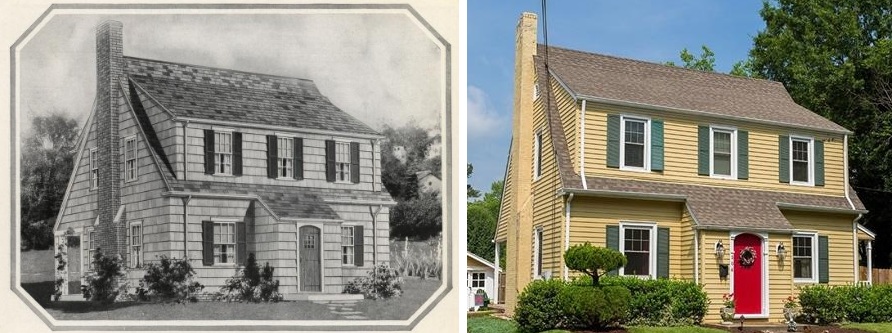
The Impact of the Great Depression
Sears also differed from their competitors in that, starting in 1911, they began offering financing. Early mortgage loans were usually 5-15 years at around 6% interest. Sales peaked in 1929, just before The Great Depression.
The Great Depression of the 1930s marked a turning point for Sears and its Modern Homes division. Although Sears had expanded financing options to make homeownership more accessible, the economic collapse led to widespread defaults. Many families who had taken out loans to purchase Kit Homes found themselves unable to make payments. Sears, in turn, faced mounting financial losses. In the end, Sears was forced to liquidate $11 million in defaulted debt. Their once-popular mortgage program had turned into a public relations nightmare. Sears quietly shuttered it at the end of 1933.
Despite the devastation, however, Sears homes provided stability for thousands of families during turbulent times. Their affordability and durability became lifelines. But by 1942, the pressures of the changing era forced Sears to close its Modern Homes division.
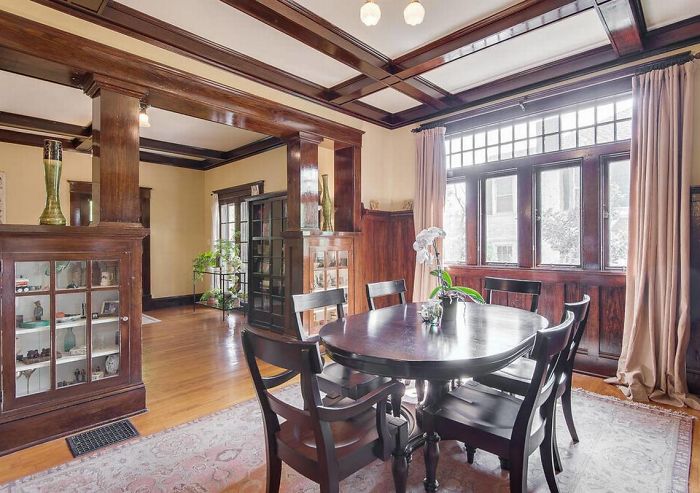
Stigma and Changing Perceptions
After 1942, Sears Kit Home’s time was over. When WWII ended in 1945, the Modern Housing Boom began in earnest. The rise of the suburbs resulted in the Prefab Home – what we know and are accustomed to today. In the same way Sears had helped WWI veterans obtain a home, these new cookie cutter homes in suburbia gave WWII veterans a place to start their lives.
Sadly, Sears homes became embarrassing to own and live in for some families. Despite their solid construction and quality materials, Sears Kit Homes carried a stigma for decades. Many people viewed them as inferior simply because they arrived by mail and were assembled by amateurs rather than master craftsmen. In an era when custom-built homes signified wealth and social standing, kit homes were often seen as the choice of those who couldn’t afford something “better.” From the 1950s to the 1970s, many Sears Homes were either torn down, abandoned, or simply renovated beyond recognition. (The House That Came in the Mail)
Happily, over time, perceptions shifted. Historians, architects, and preservationists began to recognize the remarkable craftsmanship of Sears homes. Many featured hardwood floors, solid plaster walls, and intricate architectural details that rivaled custom-built houses. Today, Sears Kit Homes are celebrated as iconic examples of early 20th-century American ingenuity and design.
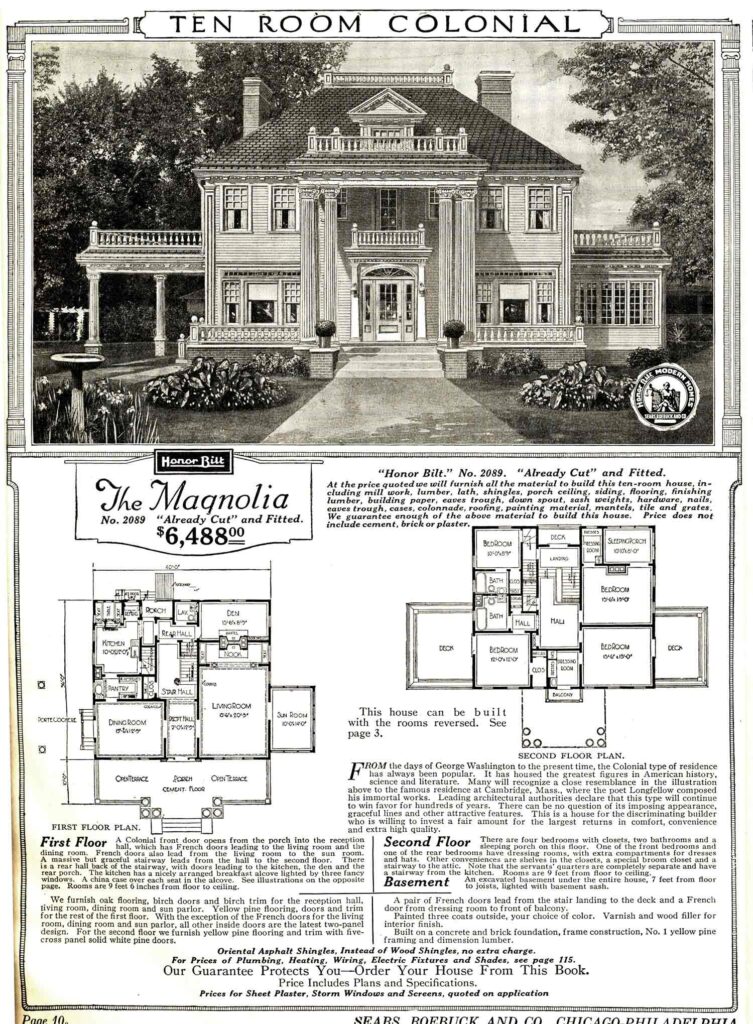
Sears Homes Today
Experts estimate that between 70,000 and 75,000 Sears Kit Homes were built from 1908 to 1942. Thousands are still standing, preserved in neighborhoods across the United States and Canada. Towns like Elgin and Carlinville, Illinois, are now hotspots for these homes, showcasing entire neighborhoods filled with Sears homes.
Ohio, Illinois, Michigan, and Pennsylvania have some of the highest concentrations still standing thanks to their proximity to major railroad lines and Sears’ Chicago headquarters. Today, many of these homes have been lovingly restored, blending their original charm with modern amenities.
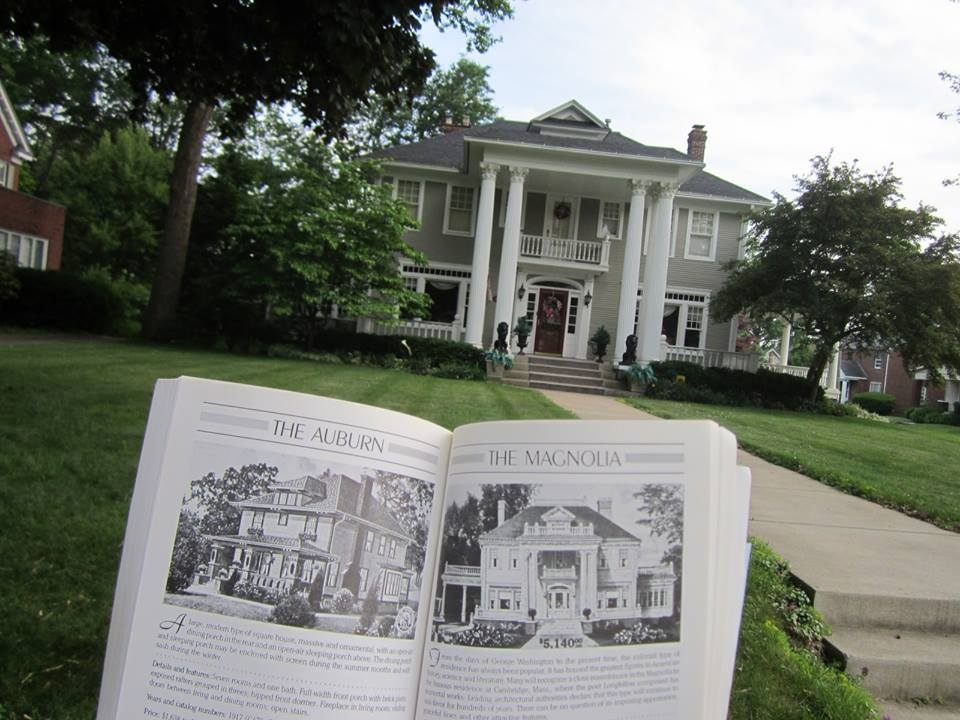
And though Sears discontinued its Modern Homes catalog in 1940 but continued to sell them through local sales offices until 1942, all sales records related to home sales were destroyed during a corporate house cleaning. Only a small percentage were documented when built and it takes detailed research to ID them today.
Thanks to “Sears Homes Hunters” – groups of independent people interested in this part of Americana – nearly 50,000 Kit Homes from Sears and other companies across America have been identified. It is estimated that hundreds (perhaps thousands) more are still standing, waiting to be recognized and appreciated for the marvels they are.
The demand for a Sears Home is exceedingly high today. The Martha Washington model Kit Home sold on average for $2688 but, in 2016, one sold for more than a million dollars! “The whole Kit Home phenomenon is pretty unique to architecture in the United States of America. So therefore I feel very strongly that we must save at least a percentage of these houses,” Rebecca Hunter told NPR in 2018.
A Lasting Legacy of Innovation and Hope
Sears Kit Homes transformed the American dream by making homeownership accessible to ordinary citizens. They democratized housing by empowering individuals to build their futures and left an indelible mark on the North American landscape.
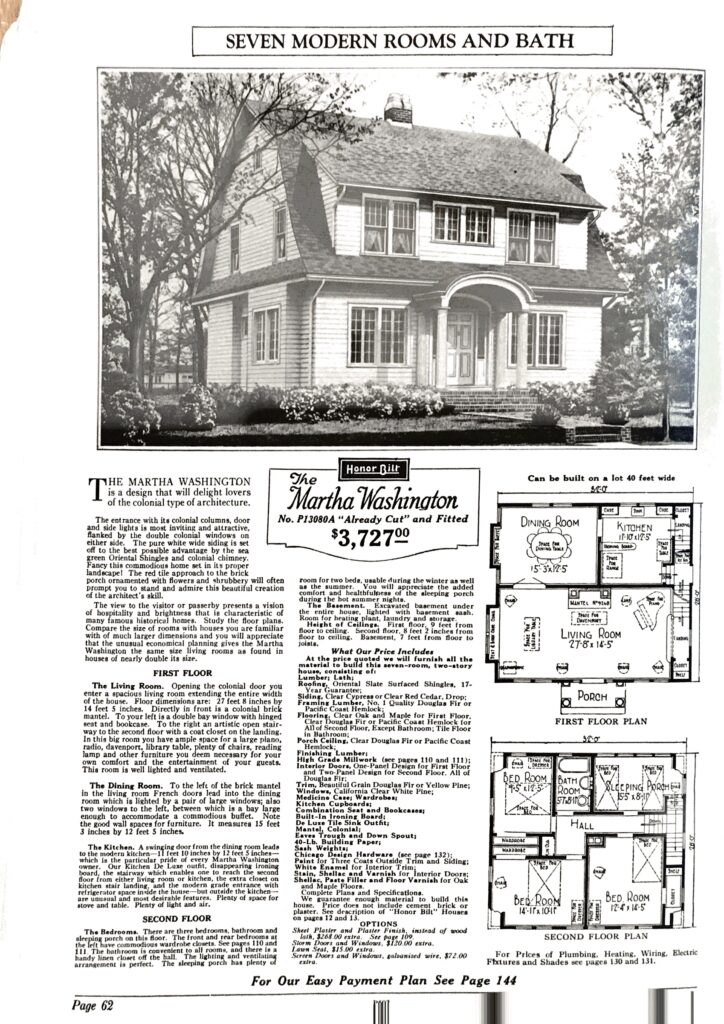
Once stigmatized as “cheap” or “inferior,” these homes are now celebrated as valuable pieces of American history. They stand as enduring symbols of resilience, innovation, and the spirit of self-reliance that defines the American character. Their legacy is found not only in their sturdy walls and beautiful architecture but also in the millions of lives they have touched – offering something truly revolutionary: a home of one’s own.

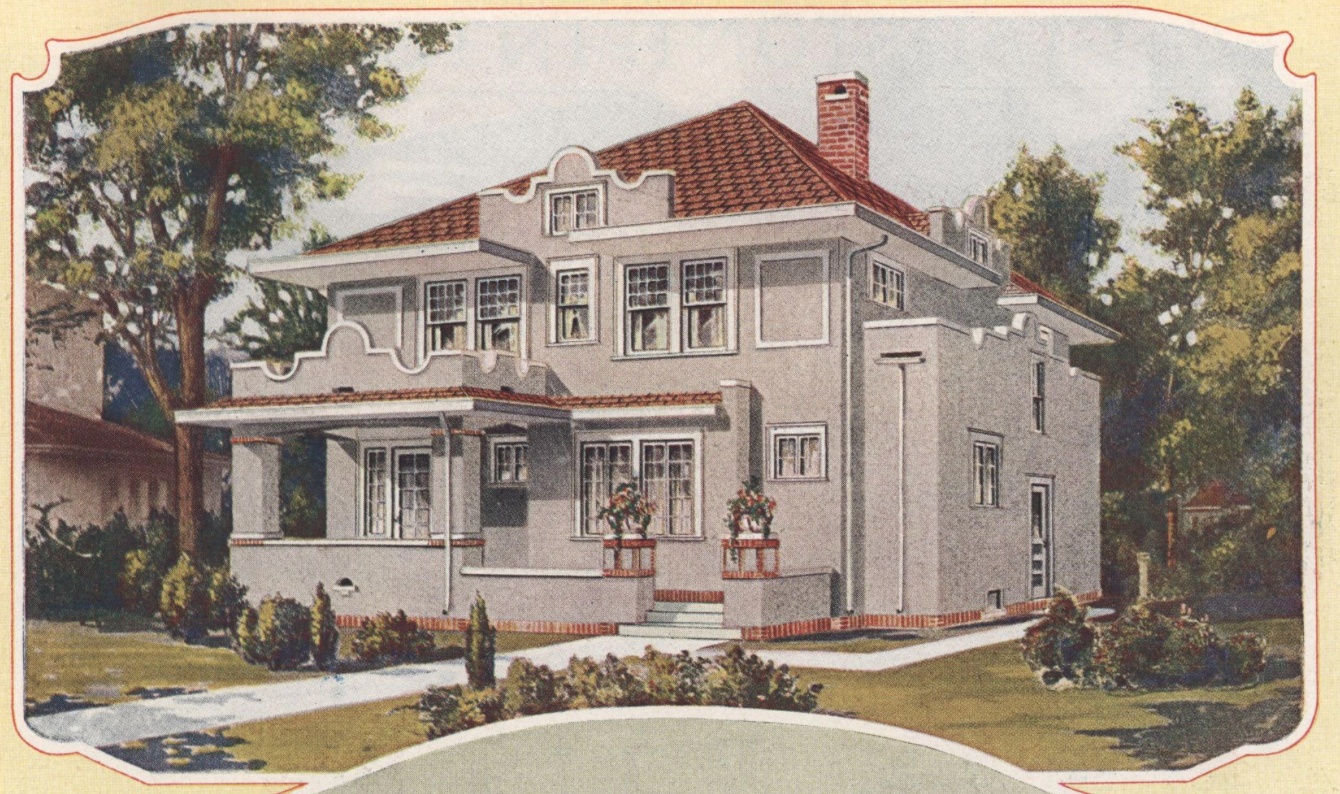
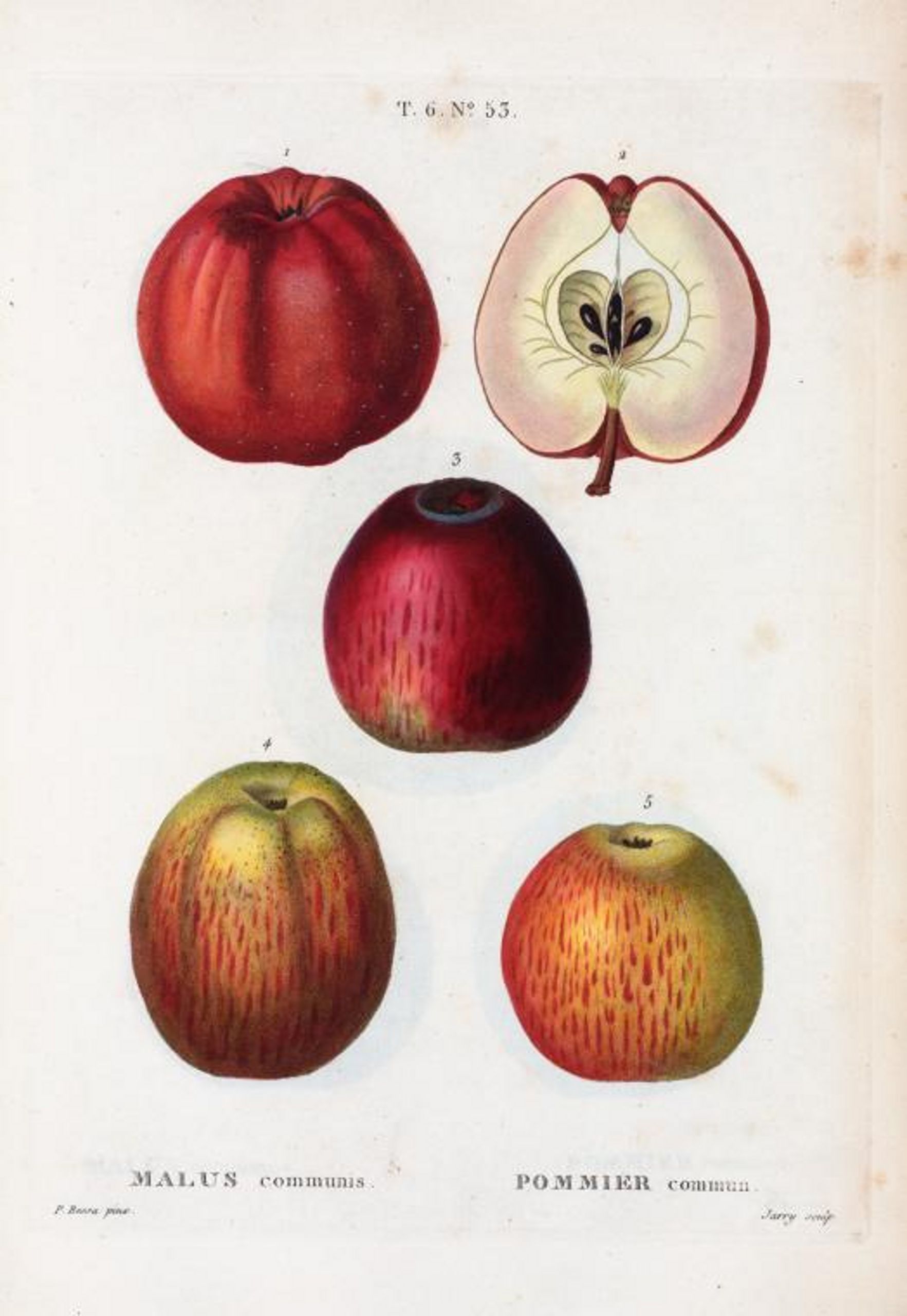
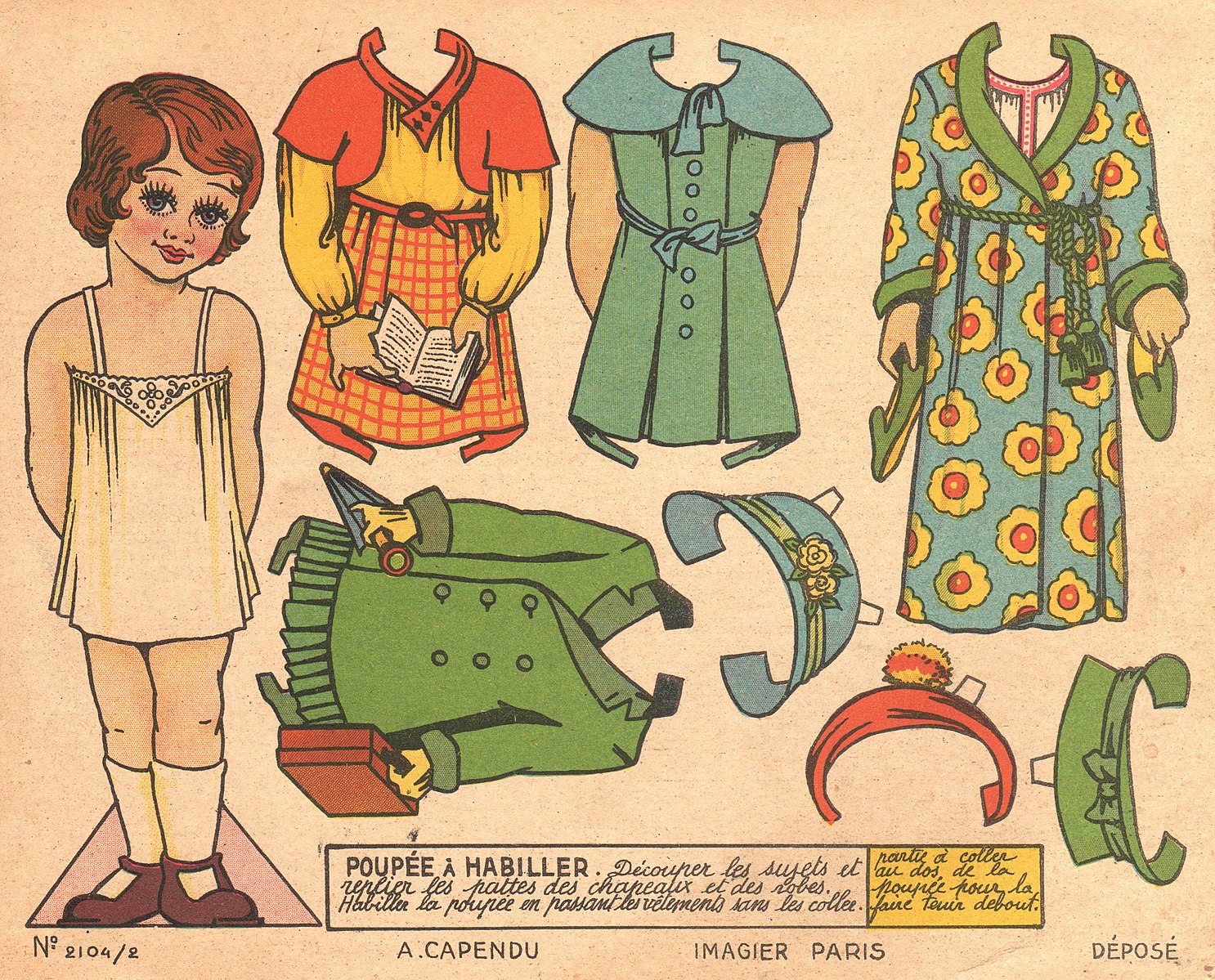
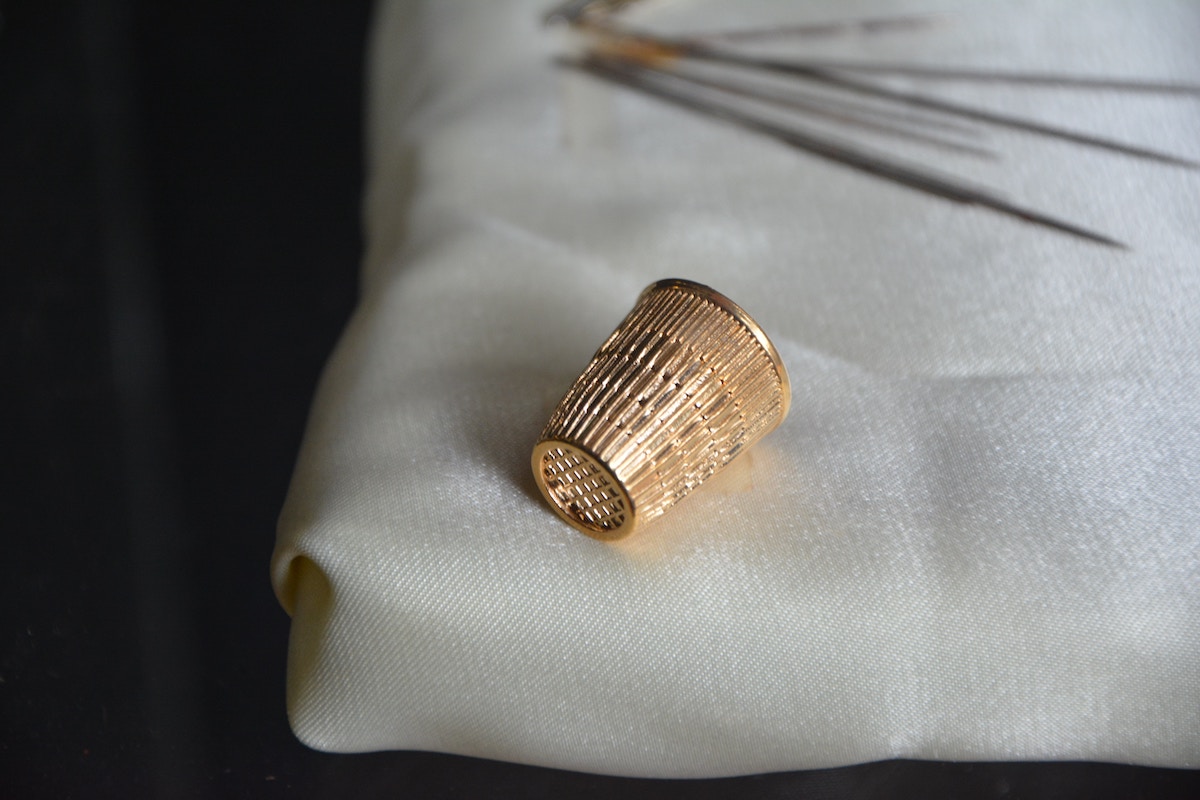
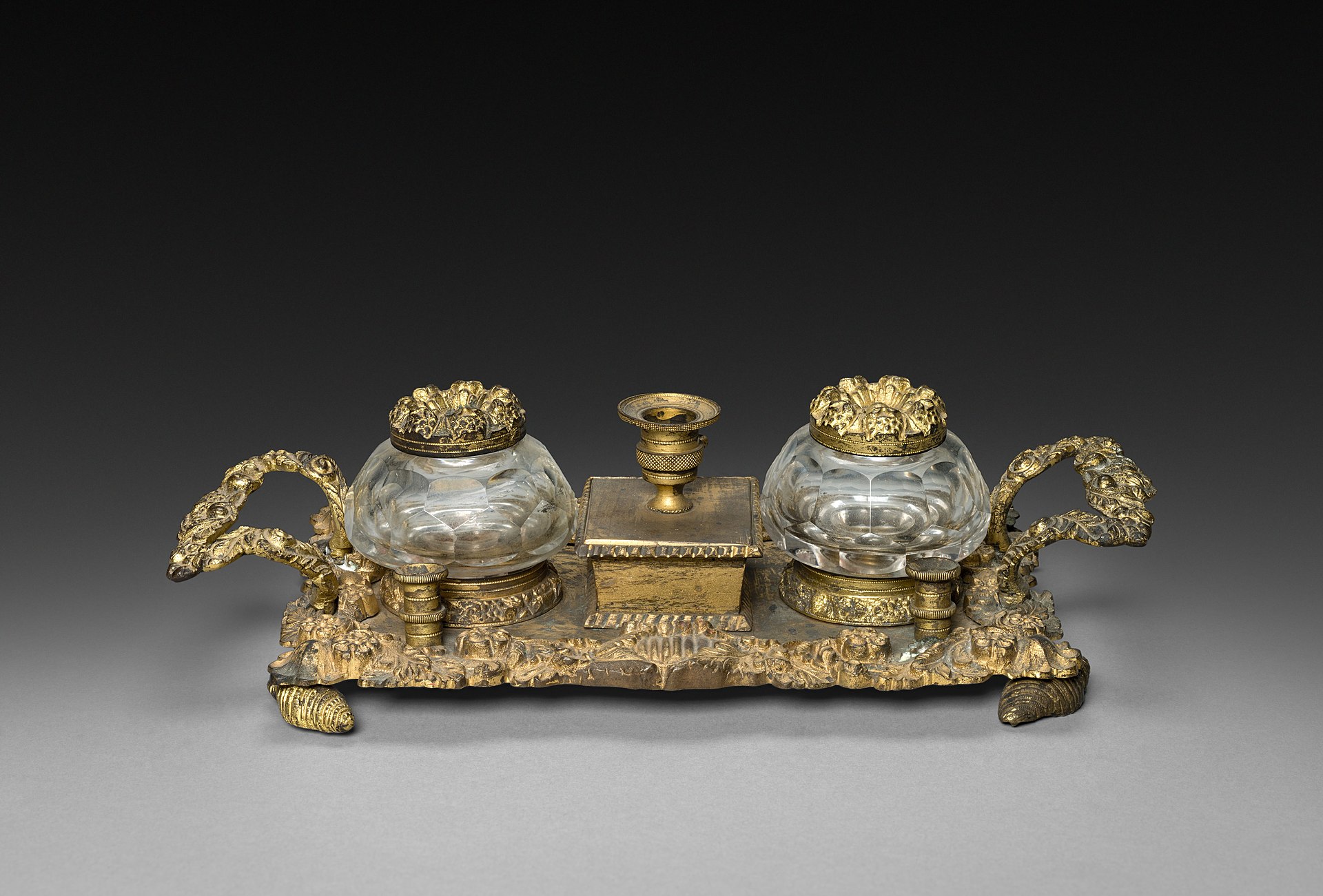

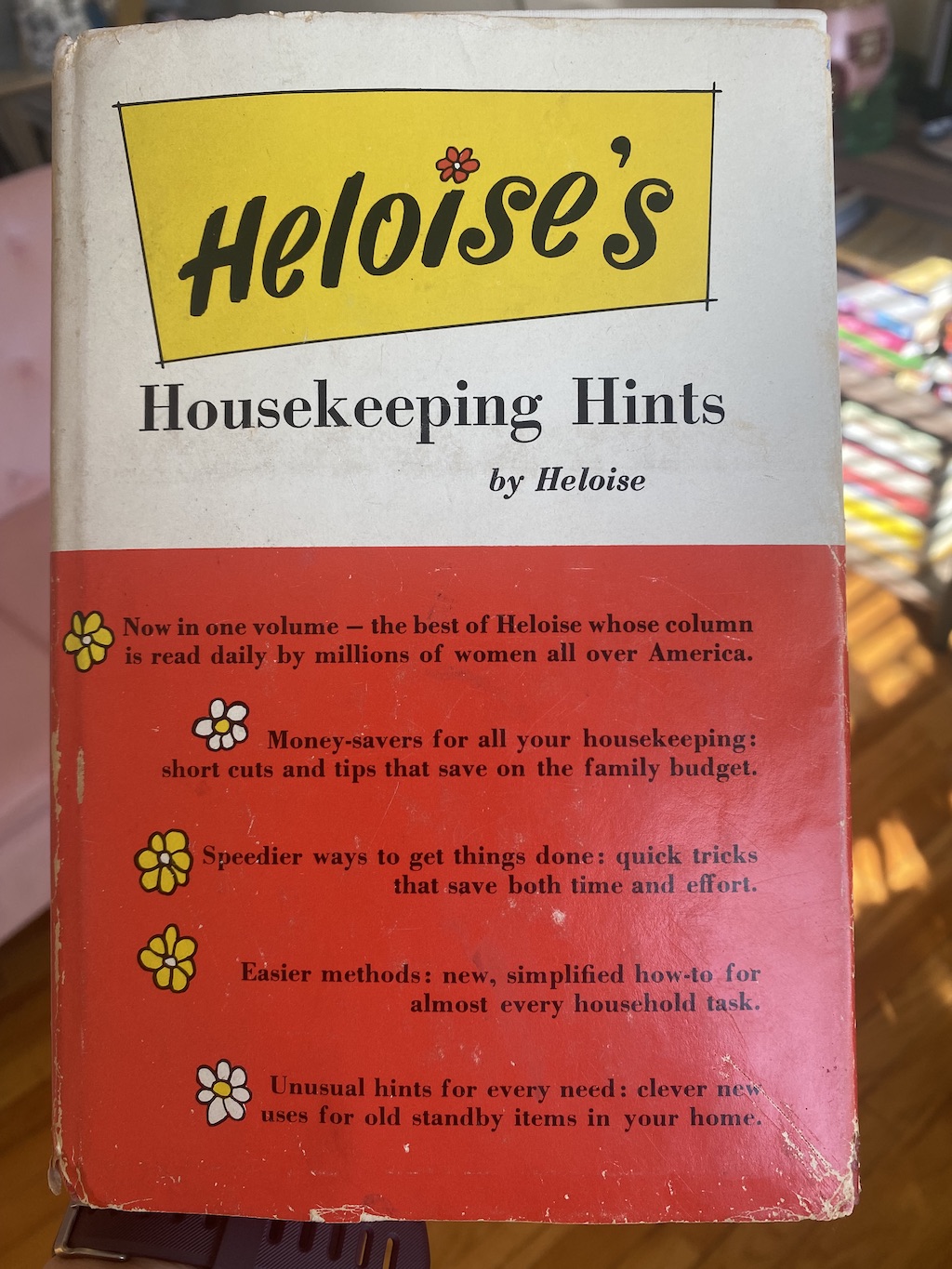
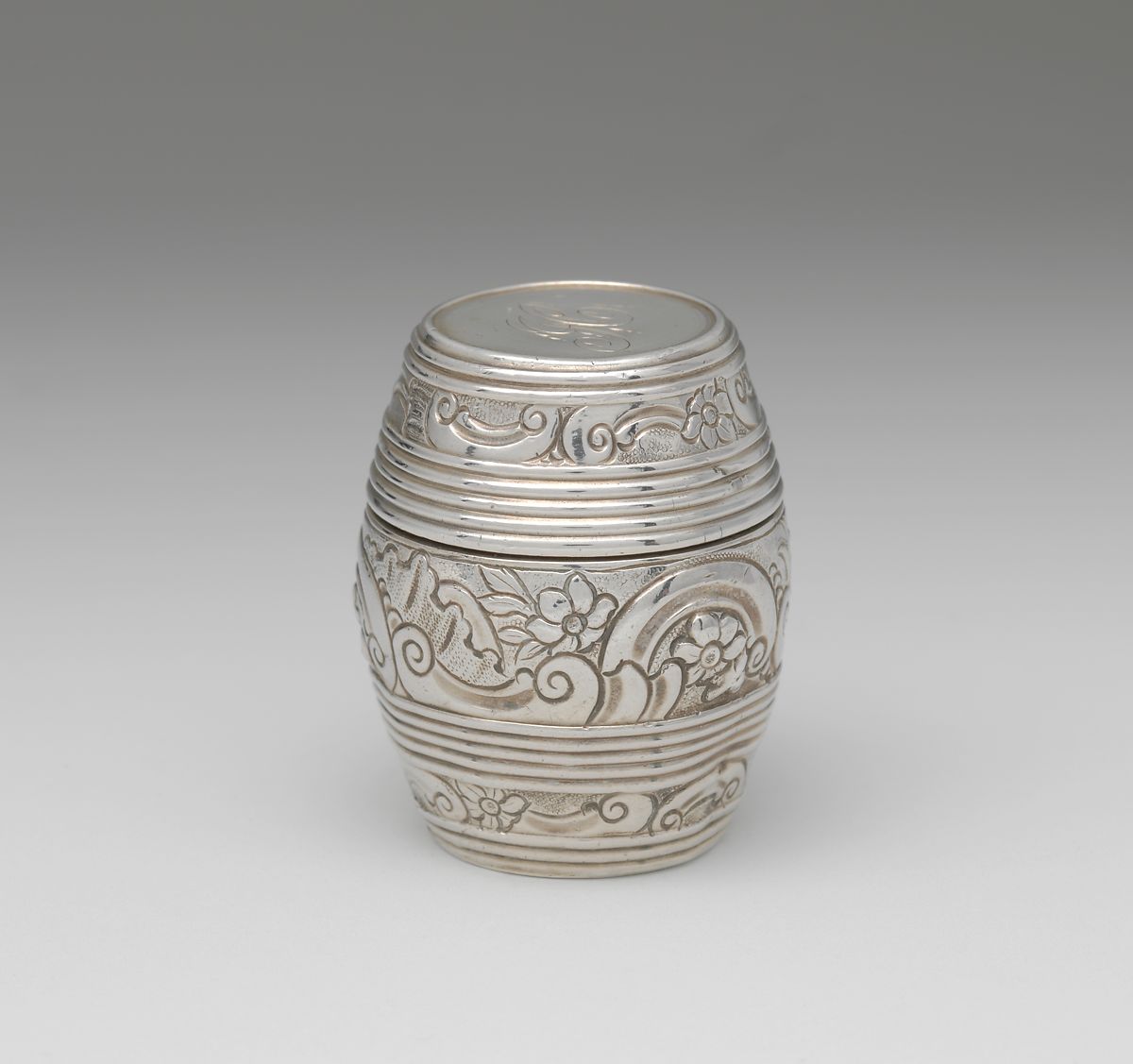
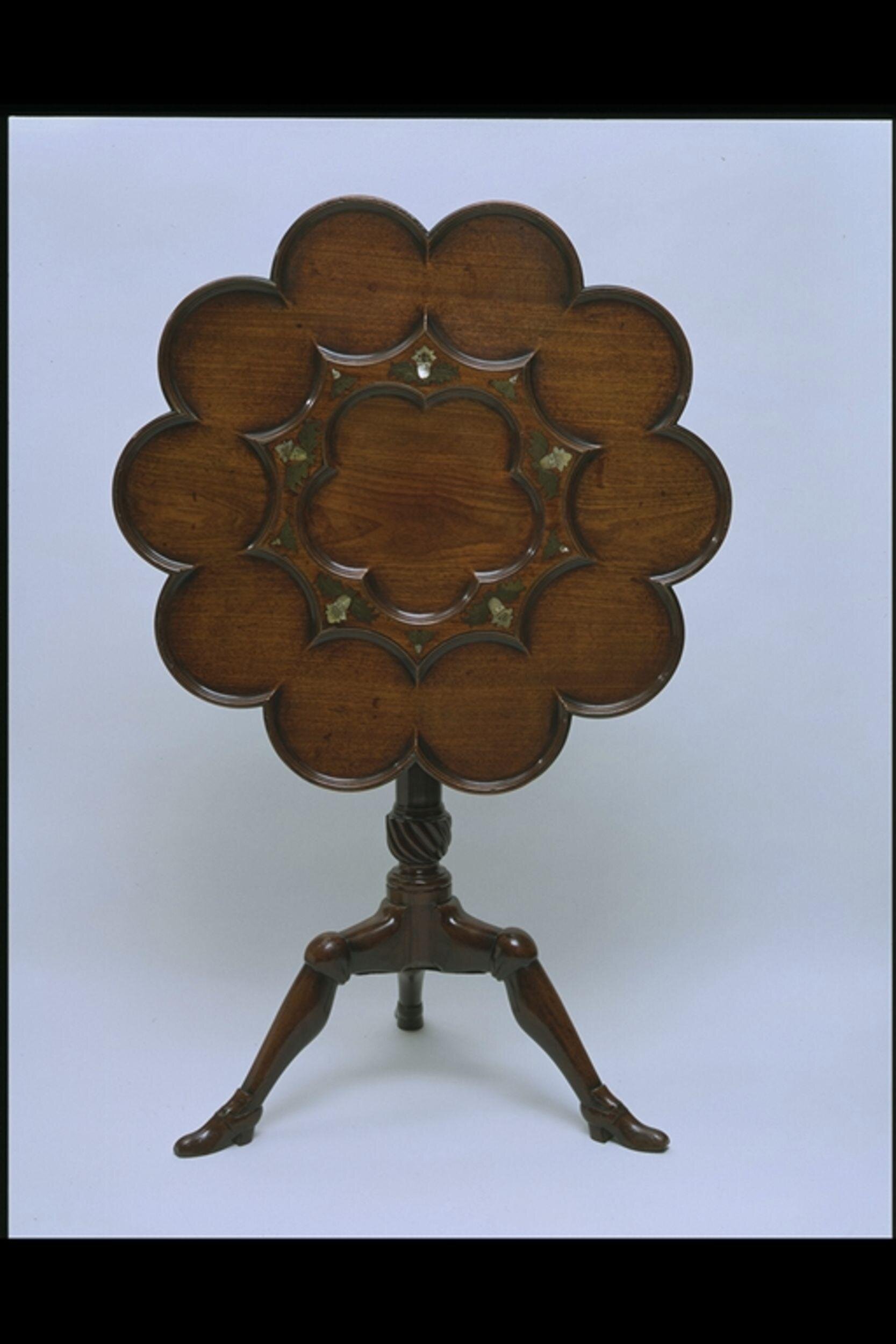
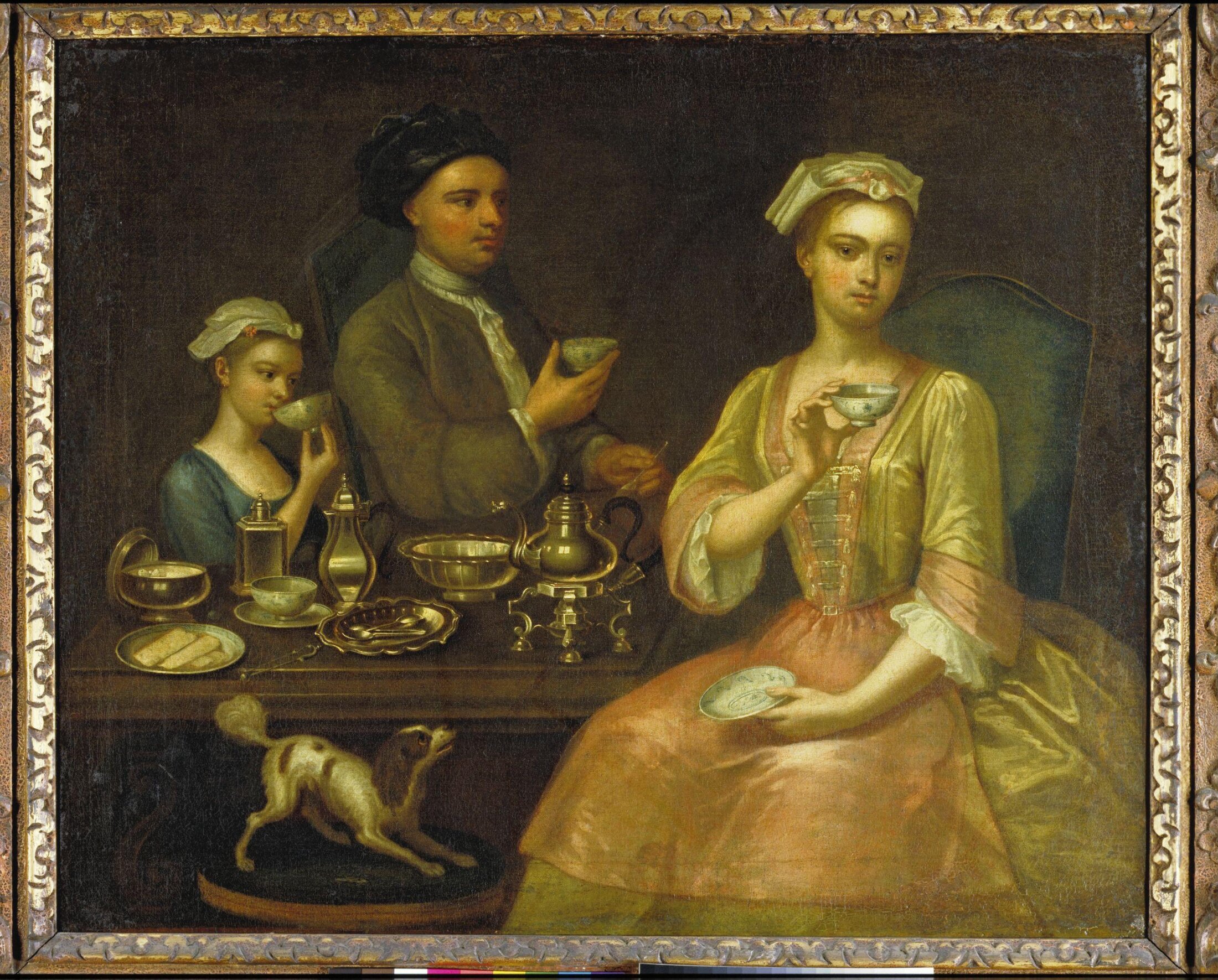
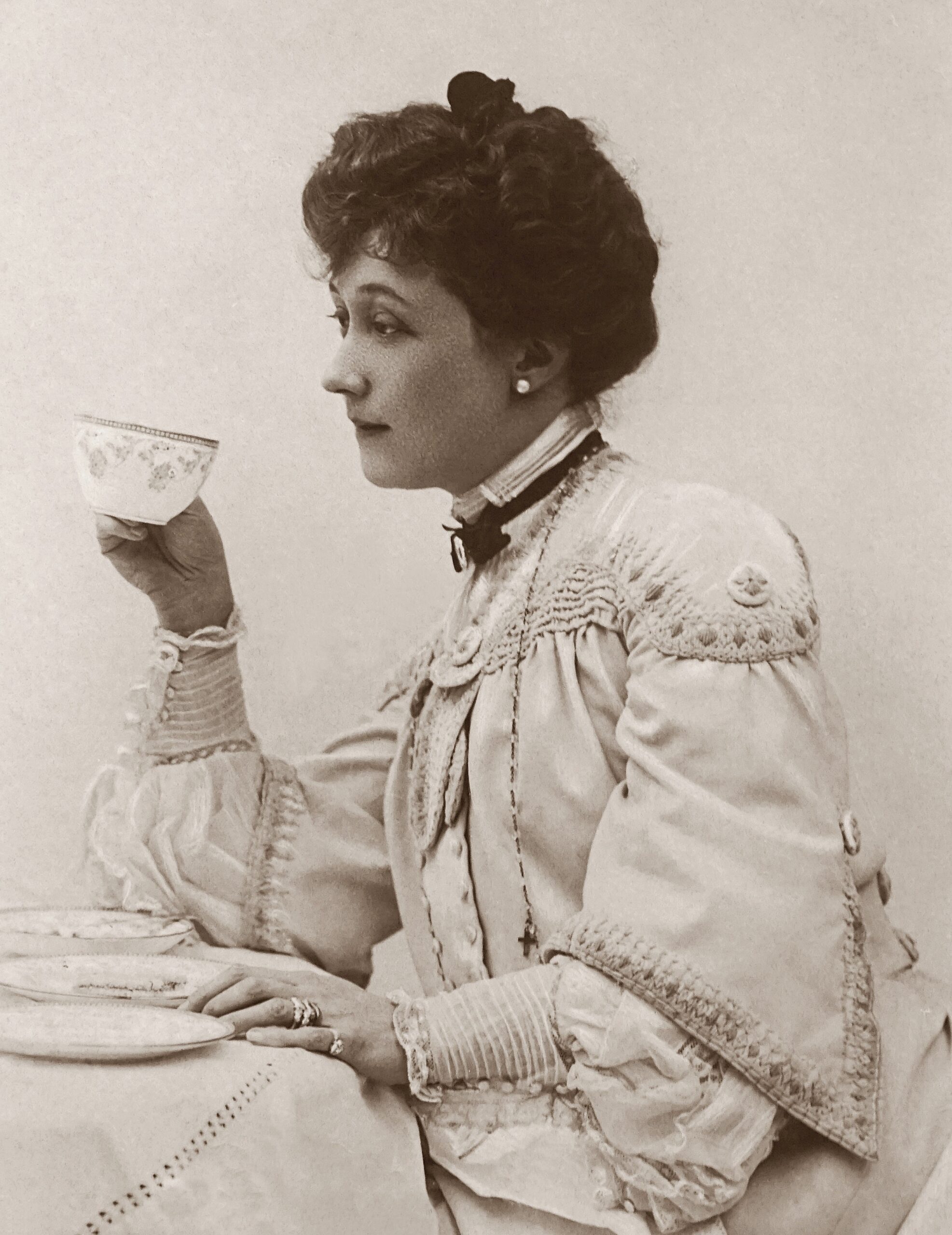

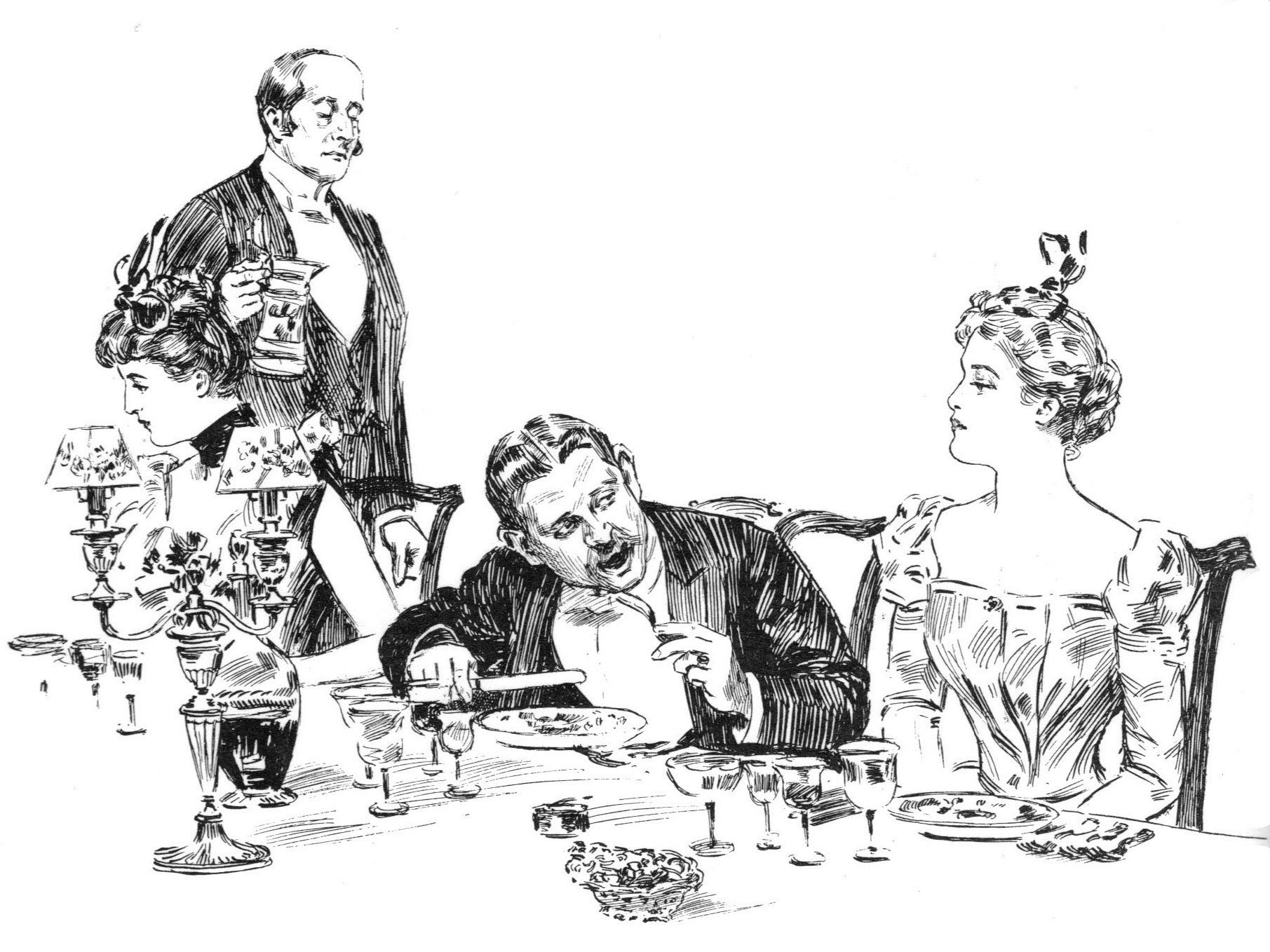
I have a friend who owns a Sears Kit Home in my town. It looks as good as and has aged as well as any other house in town from the same era. It is three stories, but a small footprint, built on a hillside.
incredible! I had no idea such a thing existed. The designs are quite striking and look oddly familiar, too. I imagine AI and Google street view together have been doing a fine job identifying those that remain, too. I remember sears as the drab department store where we had to take photos as children- amazing how a business can change so much over generations. Beautifully written and so informative!